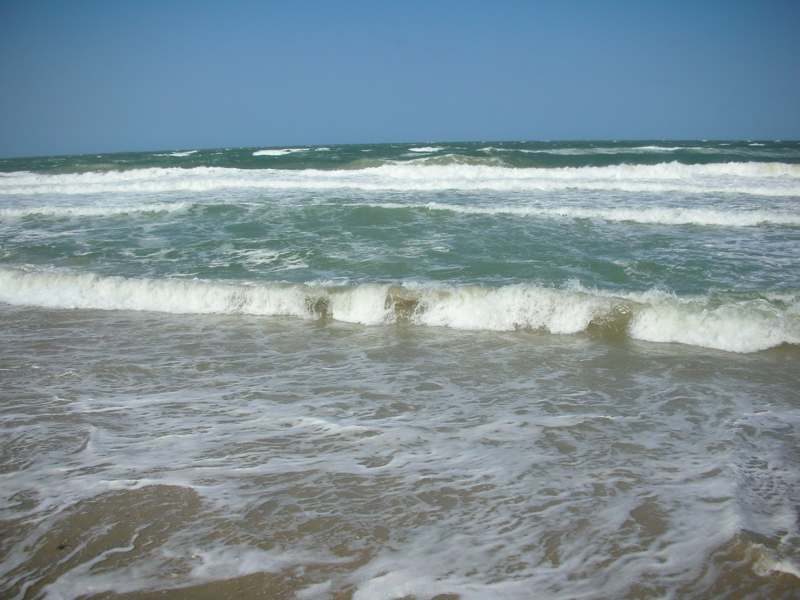
“Everything about” the Outer Banks, rhapsodized writer Anne Siddons, “had the ring and taste and feel of utter rightness to me.” And for decades, visitors have expressed similar sentiments about North Carolina’s humbly stylish archipelago wreathed by crystalline waters.
Outer Banks Water Clarity: Clear Blues
Can you describe the Outer Banks water clarity? We hear this question often, but the answer changes depending on the time of year. During the winter and late fall, OBX conditions aren’t ideal due to shifting sediment. During the late spring, summer and early fall, it’s a different — more beautiful — story. In season, OBX beaches are picturesque: tall grasses crown gently wind-swept dunes that unravel into soft sands and aquamarine waters. To draw a comparison, the barrier island region of North Carolina favors blue-green water that makes North Carolina beaches famous.
Outer Banks History: From Dare To Wrights
The Outer Banks is a fertile crescent of firsts, making it a good fit for anyone who likes to soak in a bit of history while vacationing.
In 1587, Eleanor White Dare gave birth to Virginia Dare, the first English colonizer born in the New World. And in 1903, Kill Devil Hills’ breezes carried Orville and Wilbur Wright’s flying machine for 59 seconds — the first sustained flight of a “heavier-than-air aircraft.”
The Outer Banks is also where the infamous pirate Blackbeard met his ultimate fate, as did the settlers of Sir Walter Raleigh’s “Lost Colony.” Today, visitors can take pirate tours and jump back in time at the Lost Colony living museum. Be sure to keep an ear out for locals who speak with a distinct brogue known as the “hoi toider” accent — a remnant from the English and Irish who came during the 16th and 17th centuries.
On an architectural note, Cape Hatteras is home to the tallest brick lighthouse in the United States. An iconic structure, it resembles a giant, black-and-white candy cane.
Outer Banks Vacations: What Can We Do?
Surf
Warm and cold water systems merge right off the OBX coast, which means things can — and do — get choppy, especially during the winter. Shipwrecks plague the area, so seafarers call it the “graveyard of the Atlantic.” But those choppy seas aren’t all bad because they also generate high waves, making OBX the best surf spot on the east coast. During the best surf seasons, the water clarity will be lower.
Fishing, Flying and Diving
Outer Banks evangelists say it’s a “fisherman’s paradise” — and they’re right. Visitors can enlist charters for brackish fishing, fly fishing and offshore fishing. Folks looking for more laid-back angling opportunities can always plop down on one of the area’s many piers.
A historical aviation hub, OBX is also awash in flying opportunities. In fact, some vacation packages include lessons.
And as we mentioned, the Outer Banks’ ocean gets rough. Many ships have fallen to its fierceness, making it a mecca for wreck diving enthusiasts. Notoriously, German U-boats regularly sank merchant vessels off the OBX coast during WWII. Today, visitors can explore all the underwater ruins, some of which date back to the 1800s.
The Outer Banks are a slice of vacation haven for our guests. Sound about your speed? Start planning your OBX getaway today.